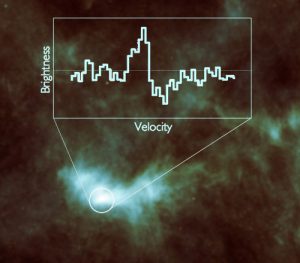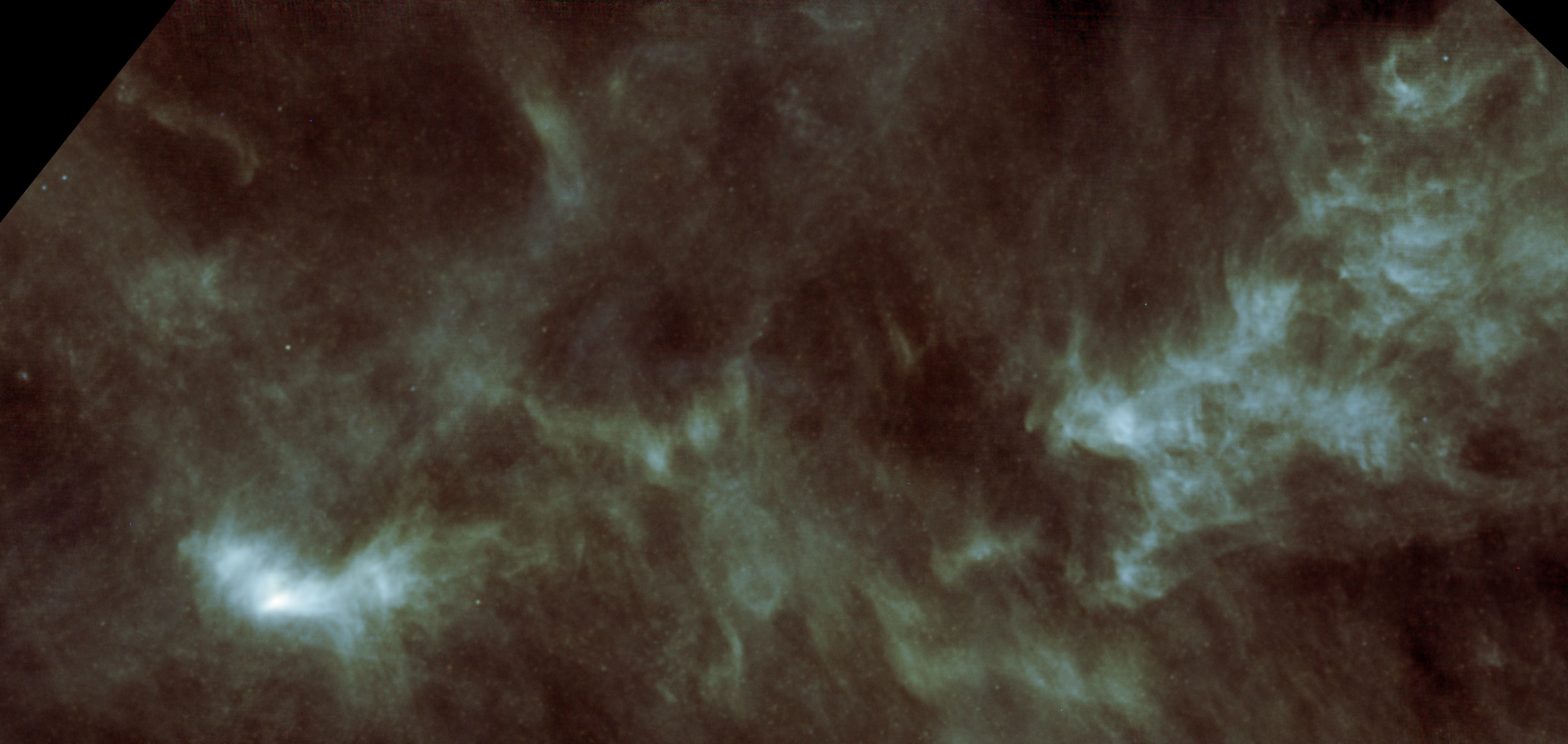| Basic Information | |
| What is this? | A cloud of gas and dust that contains large amounts of water vapour |
| Where is it in the sky? | In the constellation of Taurus |
| How big is it? | The region shown is around a third of a light year across |
| How far away is it? | Around 450 light years |
| What do the colours represent? | The brighter colours are denser regions of gas and dust |
Downloads
See this object in:
Herschel has discovered enough water vapour to fill Earth’s oceans more than 2000 times over, within a gas and dust cloud that is on the verge of collapsing into a new Sun-like star.
Stars form within cold, dark clouds of gas and dust – ‘pre-stellar cores’ – that contain all the ingredients to make solar systems like our own. Water, essential to life on Earth, has previously been detected outside of our Solar System as gas and ice coated onto tiny dust grains near sites of active star formation, and in proto-planetary discs capable of forming alien planetary systems.
The new Herschel observations of a cold pre-stellar core in the constellation of Taurus known as Lynds 1544 are the first detection of water vapour in a molecular cloud on the verge of star formation. More than 2000 Earth oceans-worth of water vapour were detected, liberated from icy dust grains by high-energy cosmic rays passing through the cloud.
“To produce that amount of vapour, there must be a lot of water ice in the cloud, more than three million frozen Earth oceans’ worth,” says Paola Caselli from the University of Leeds, UK, lead author of the paper reporting the results in Astrophysical Journal Letters. “Before our observations, the understanding was that all the water was frozen onto dust grains because it was too cold to be in the gas phase and so we could not measure it. Now we will need to review our understanding of the chemical processes in this dense region and, in particular, the importance of cosmic rays to maintain some amount of water vapour.”

The observations also revealed that the water molecules are flowing towards the heart of the cloud where a new star will probably form, indicating that gravitational collapse has just started. “There is absolutely no sign of stars in this dark cloud today, but by looking at the water molecules, we can see evidence of motion inside the region that can be understood as collapse of the whole cloud towards the centre,” says Dr Caselli. “There is enough material to form a star at least as massive as our Sun, which means it could also be forming a planetary system, possibly one like ours.”
Some of the water vapour detected in L1544 will go into forming the star, but the rest will be incorporated into the surrounding disc, providing a rich water reservoir to feed potential new planets.
“Thanks to Herschel, we can now follow the ‘water trail’ from a molecular cloud in the interstellar medium, through the star formation process, to a planet like Earth where water is a crucial ingredient for life,” says ESA’s Herschel Project Scientist, Göran Pilbratt.
Detailed Information
WISH
Caselli et al. (2012) The Astrophysical Journal Letters 759, L37 “First detection of water vapor in a pre-stellar core”
Large water reservoirs at the dawn of stellar birth

